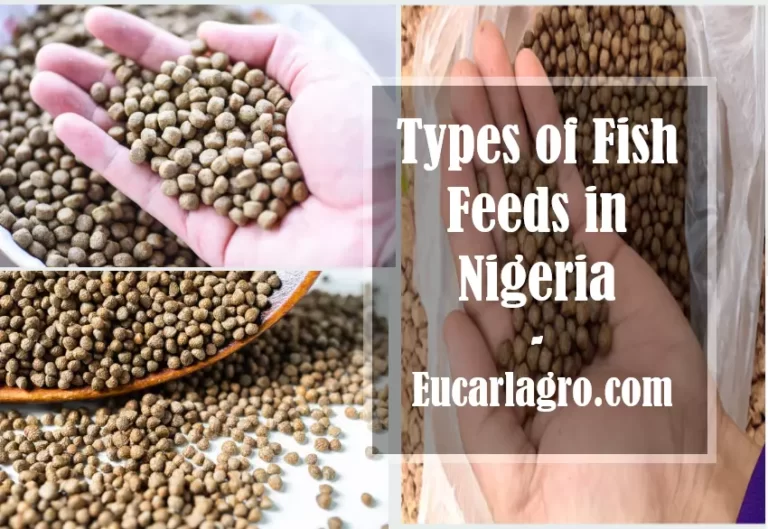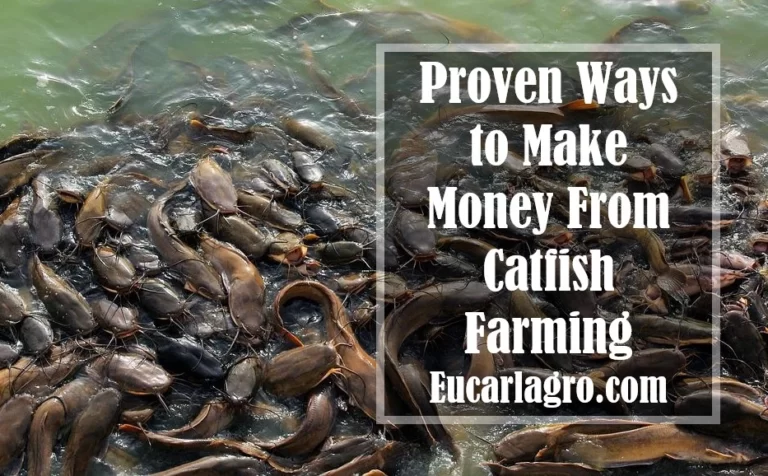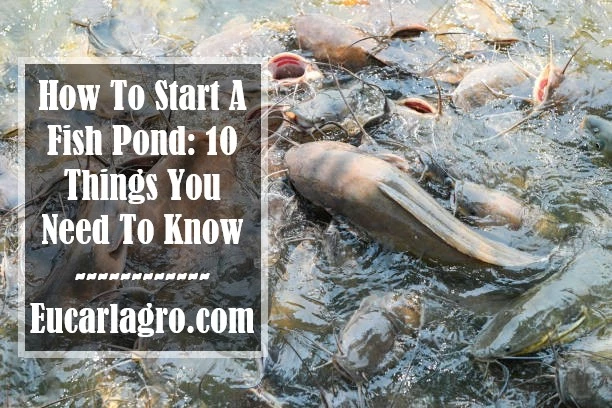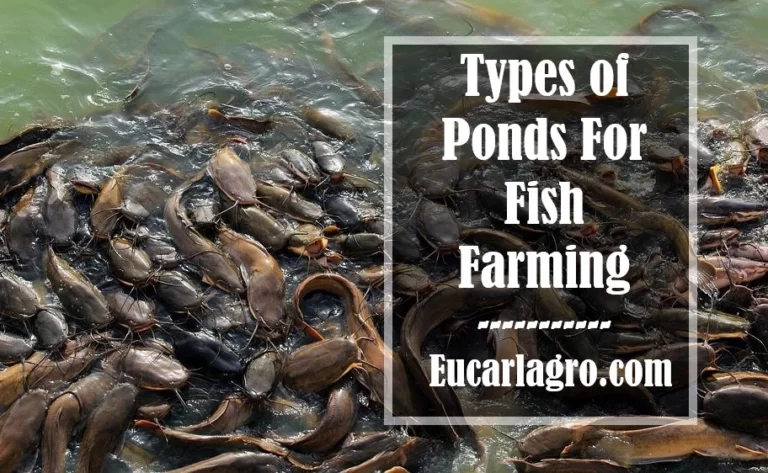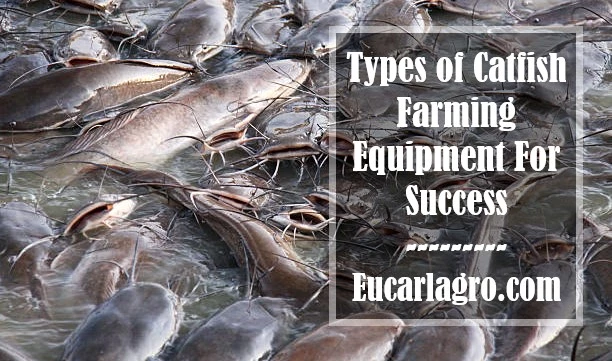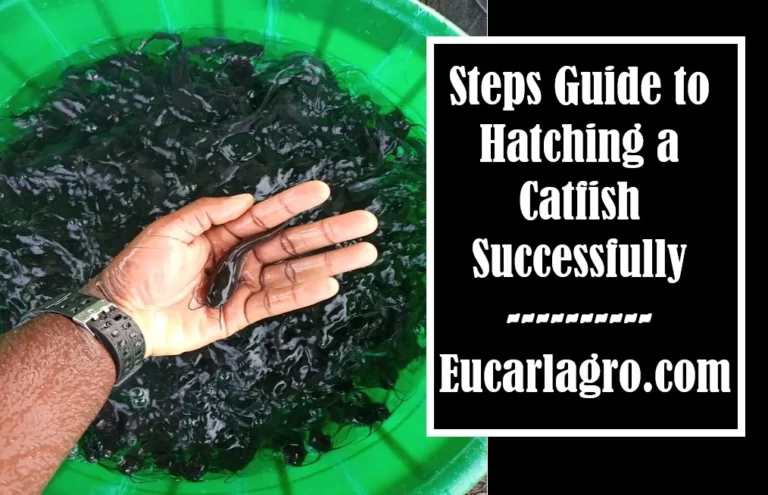How To Start Shrimp Farming In Nigeria
Shrimp farming in Nigeria is a promising and growing agricultural sector. Unlike Poultry, Beef and Catfish farming, Shrimp farming is not too popular with the Nigerian public, because of its segregation to mainly the south-south region of Nigeria. And for this reason, we would be discussing how to start shrimp farming in Nigeria.
Shrimp is a crustacean commonly found in places like Bayelsa, Akwa-Ibom and Cross River. It is very similar to Crayfish that we use in preparing virtually any dish in Nigeria.
Just like catfish farming is the order of the day, Shrimp farming is gradually gaining a public reputation. But the question is; would you rather wait for the market to get saturated before you start shrimp farming or would you bring this mode of agriculture to your area? Here is a word of encouragement ” it won’t kill if you are the first to try”.
Nevertheless, shrimp farming might sound esoteric to some states like in Northern Nigeria but take our words to heart, shrimp farming is very lucrative.
Before we go forward into the subject of this post “how to start shrimp farming in Nigeria”, let’s briefly discuss the health benefits of shrimp.
Health Benefits of Shrimp
Shrimp as said earlier is a crustacean and just like other crustaceans, Shrimp is an Aquatic animal (salt water to be precise). Now you see why it grows in riverine states like those in South-South Nigeria.
Shrimp farming began in Asia(China and Indonesia) in the 1970s because of its great need in Western Europe, Japan and the United States then. By 1991 many countries like those in Latin America joined in shrimp farming. And as of today, Shrimp farming has spread even into Nigeria, with a global annual valuation of $230 million or thereabout.
Now, here are the health benefits of shrimp that would draw you to join this form of agriculture.
- Shrimps have anti-ageing properties. Remove wrinkles and make your beauty evergreen when you add it to your daily diet.
- Shrimps contain a chemical substance called Astaxanthin. And research has proven that this substance helps in improving eyesight. Therefore Shrimp improves Eyesight.
- Shrimps are rich in vitamin D and Calcium which strengthen bones and prevent incidences of dislocations, fractures and osteoporosis.
- Shrimps are wards off cancer. As we said earlier Shrimp contains Astaxanthin, and also contains omega-3 oil. When these two compounds combine research shows that they wear out cancer cells. Thereby reducing the risks of death from cancer.
- Lastly, regarding the health benefits of Shrimp, its anti-inflammatory and Heart maintenance properties. Although high cholesterol, shrimp still can solve heart-related conditions.
How To Start Shrimp Farming In Nigeria
Do you still remember our article on how to start catfish farming in Nigeria? In that article, there were two techniques for rearing catfish; Marine (in the vast waters), and indoors (in ponds). But shrimp farming is quite similar but has an additional technique. And that is Freshwater shrimp farming.
Female shrimps lay up to a million eggs which also hatch in a day. The hatched shrimp is called natto. Hence we won’t be wrong to say that a baby or offspring of a shrimp is called a Nauplii. These young ones are fed with Algae (remember algae from our previous articles on the Economic Benefits of Algae Farms).
The unique truth about Shrimps is that they have rapid growth. These Nauplii would be mature for transfer into a nursery shrimp pond in 12 days. And at the 25th day, the juvenile shrimp is ready to be transferred into the growth pond. By the 6th month of growth from the day of being hatched, it is ready to be harvested for the market.
Without any further grammar, here is how to start shrimp farming in Nigeria:
1. Choose A Suitable Location
Shrimps grow better in ponds rather than in containers. They are saltwater animals but can survive in brackish or freshwater. So how those the type of water affect the location of the shrimp farm?
The Water does affect the location of the farm because you would need to be located in a place where healthy water for your shrimps would be available.
For those farming shrimp extensively, the best location would be close to an ocean. But for intensive shrimp farming practitioners, the shrimp farm should be close to the market. In doing so you would save yourself the stress of looking for customers and as well save your customers the stress of looking for your business.
Concerning the shrimp farming location in the sight of getting the raw materials, that is the shrimp larvae source. You should site your shrimp farm close to a hatchery, to save yourself the stress of sourcing for stocks, and to avoid wasting eggs as they should be hatched in a day.
The location should also be calm and free from pollution, therefore avoiding residential areas won’t be wrong either
Also, the shrimp farm should be located in a place with clay soil because of clays water holding ability. But whatever you do, while selecting or choosing a location, put into consideration; the water source, soil type, closeness to the hatchery, and accessibility to the market.
2. Construct Your Pond
It is noteworthy to know that shrimp can be farmed by three methods; Marine (Traditionally), Semi-intensive (freshwater) and intensive (indoors). And for this reason, the way the ponds are constructed is different. Before going through them one after the other, there is another tip you should uphold.
That tip is about the number of ponds to be used in shrimp farming. Now here you go. You can use one pond or two ponds. But why either one or two? Okay, this is the reason. Remember we said earlier that female shrimps lay millions of eggs that hatch in a day, but for maximum hatching, some hatcheries hatch the eggs. After hatching the Nauplii would be transported back to the shrimp farm and inoculated either directly into the main pond or can be inoculated into the nursery and then weeks after into the main pond.
On the matter of construction according to the farming method, we begin with them one after the other.
The Marine (Traditional) Method
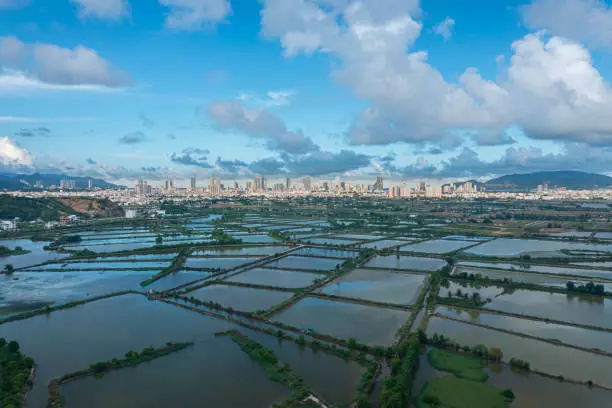
In the Marine/Traditional method of shrimp farming, The farm is located in an open water body, like a mangrove just like most of the Niger Delta shrimp farms. The Nauplii or (young stock) is sourced from the wild.
The size of marine ponds normally ranges from 3-20 hectares of land which can contain up to 5000 shrimp. With 800kg worth of shrimp being produced annually from a hectare. The only disadvantage of the marine method is that it is affected by seasons, flooding, an outbreak of diseases and theft.
The Semi-Intensive Method
The semi-Intensive method of shrimp farming is more to say an improved Traditional Shrimp farming method. The calibration/measurement of the pond is also smaller than the marine/traditional method.
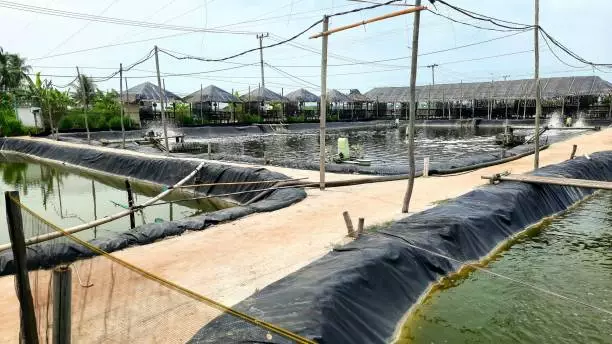
A good semi-intensive shrimp farm can be constructed on 1-3 hectares of land, With a depth of 0.8-1.2 metres. Ditches are also constructed in case of hot/sunny weather, stock collection and drainage using a measurement of (5-10m Width × 0.3-0.5m Depth ) diagonally constructed. At the end of the farming season, a hectare can produce up to 50,000 shrimp yearly. It’s this lucrative? Sure it is.
The Intensive Method
Commercially the most advantageous method of shrimp farming is the intensive method. With the inception of the Clearwater technology. Farmers can now farm shrimp industrially.
Clearwater technology is quite less difficult than we think. All you need is some tanks or concrete ponds like those ponds for catfish farming, commercially augmented shrimp feed and equipment for hatching. To clear the air, this technology is derived from the famous Clear water shrimp Farm in Neosho USA.
With this clear water technology, you can stock up on tons of shrimp as you harvest and rear them in tanks feeding them with commercial food and changing their water like catfish to ensure they have proper aeration and growth.
Although all things are said and done, still consult an experienced shrimp farmer in your area to get more tips. If you want to be the best in the future, learn from the present best.
3. Feed Your Shrimps
The nutrition of the shrimp is of the same importance as the location. But the question is “what do shrimps eat?” Shrimps eat seaweeds, that is, algae or phytoplankton. You can easily grow them by applying fertilizer to your pond if it’s an earthen pond.
But for those grown in tanks and concrete ponds, the best thing to do is to either formulate feed from household leftovers, rice bran, shredded frogs or toads, or you can buy commercial shrimp feeds or pellets as used in many city shrimp farms in Nigeria. Which then would be broadcasted to the pond after purchase or formulation for consumption.
4. Harvest the Shrimps
Before we proceed hope this topic on how to start shrimp farming in Nigeria is educative and just what you were looking for. Our Joy is knowing that you got what you searched for.
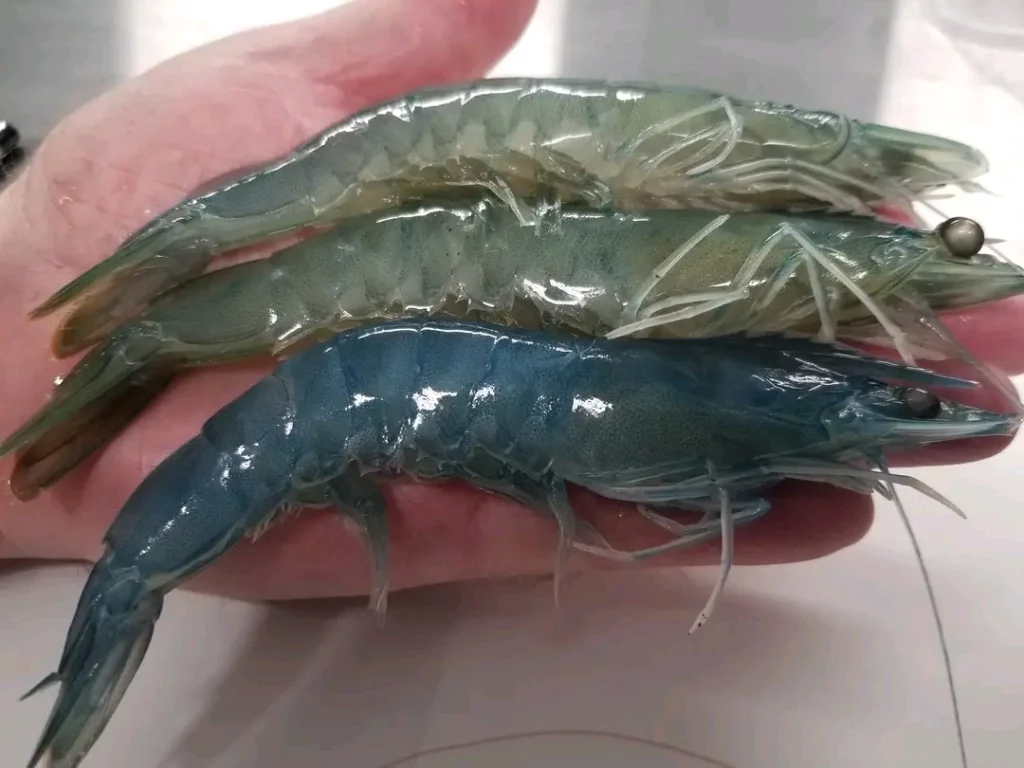
By the 5th to 6th month after the shrimp installation, the shrimp are now ready to be harvested. The harvest is best done in the evening or early morning when the water is cool. All you need to do is to reduce (drain out a decent quantity of) the water in the pond then use a dip net to harvest the shrimps.
For those running a Marine or semi-intensive shrimp farm, the workload is not as easy as the intensive farmer. You have to employ labourers who will use big fishing nets to assemble the shrimps from the hectares of land.
Economic Benefits of Shrimp farming
Shrimp is a multimillion-dollar investment that if we’ll do it, would have endless benefits to the economy of Nigeria. Here are some economic benefits of shrimp farming:
- Increase Food Availability and enable sustainability. Most food is made with shrimp in the south including the popular edikang-ikong soup of the south-south people of Nigeria (a good soup for pregnant women)
- Provision of thousands of Jobs for Youths and Citizenry. Remember eggs don’t hatch themselves, neither does the water change itself and neither does the shrimp feed and harvest itself. Therefore shrimp farming provides jobs for people.
- Reduction in Nigeria’s oil dependency and productive exploration of the water resources of Nigeria.
- Reduction in the death rates of red meat, heart problem and cancer.
- Shrimp farming can also be used to treat the environment. When shrimps are farmed using the Marine method, they tend to clean up organic waste from the sea body as they feed. Making shrimp farming ecologically important and eco-friendly.
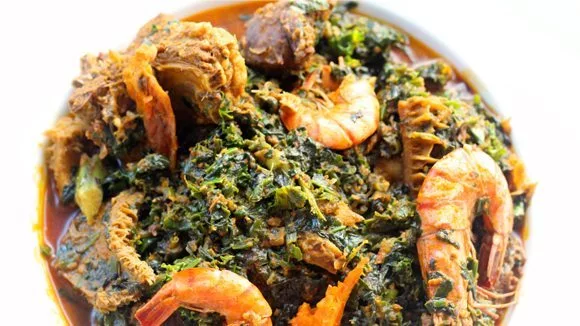
Challenges Of Shrimp Farming In Nigeria
Some challenges that discourage people from shrimp farming in Nigeria are:
- The unpopularity of shrimp farming in Nigeria
- The small market of shrimp in non-south states Nigeria.
- Lack of proper government funding for shrimp startups.
- Oil spillage in the Niger Delta region.
- Lack of Knowledge and technical know-how especially in modern methods of shrimp farming.
- Lack of funding for research on shrimp farming by the Government.
Conclusion
We have been talking about “how to start shrimp farming in Nigeria”. And we won’t be wrong to say that shrimp farming is very lucrative and a business that many people in poultry farming and catfish farming should invest their money into for it is cheaper, high income returning and the future of agriculture in Nigeria.
With this, we call it a wrap on how to start shrimp farming in Nigeria. Subscribe and Comment below. We would love to get your feedback.

